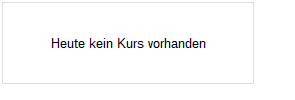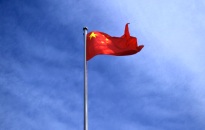
I. M. Skaugen SE : 3Q Result 2014
The I.M. Skaugen Group (IMSK) had a negative result for 3Q14 of USD 4.5 mill vs a negative USD 6.8 mill in 2Q14. During 3Q14 the EBIT result for the Norgas segment continued its positive trend and improved with USD 1.4 mill from a negative USD 2.9 mill in 2Q14 to a negative of USD 1.5 mill in 3Q14.
PERFORMANCE IN 3Q14
During the 3Q14 we experienced a continuing positive trend of quarter on quarter improvements for our core business; Norgas Carriers. The EBIT result improvement for Norgas Carriers in 3Q14 was USD 1.4 mill, from a negative of USD 2.9 mill in 2Q14 to a negative of USD 1.5 mill in 3Q14. At present, we see this underlying trend of improving trading performance to continue into 4Q14.
Looking at 1Q14 vs 3Q14, the improvements amounted to USD 3.6 mill in Norgas EBIT. This is before income and costs reflecting restructuring and sale of assets and thus reflecting the underlying business performance
Half of the improvements were due to increased revenues and the remainder stems from lower operating cost. Most of the cost savings are the effect of our "centralise and simply" program, where shore based costs have been reduced significantly. The revenue improvements came from actions taken, which have provided more optimal scheduling of our ships. The better positioning of our fleet vs trade available has thus reduced positioning/ballast voyages and idle time.
We currently employ more than half of the Norgas fleet for business generated west of Suez compared to the past when more than 50% of the business was done east of Suez. In the recent past about 70 % of our fleet depended on loading in the Gulf region and more than 50% of the products we carried were ethylene. Today less than 30% of the loadings are done in the Gulf region and ethylene represent less than 30% of products carried. The rest is a more balanced mix of the other petrochemical gases or other products like LPG as well as LNG (Fig. 2). In the recent past, about 2/3 of our ships were engaged under longer term contracts with clients while we currently have about 2/3 of the fleet making its trade in the global spot markets.
All these changes in commercial strategy, contract portfolio, trading routes, clients and product mix, are the result of decisions made at the end of last year. We decided to reposition part of our fleet for more trade west of Suez and outside the Gulf region. As a consequence we decided not to renew a major contract for loading in the Gulf region. The negative effect of this re-positioning could be seen in the poor results earlier this year with less revenue earning days for the fleet due to repositioning cost. However, we are now starting to reap the benefits of this repositioning with improving Time Charter Earnings (TCE) for our fleet.
To illustrate the trend and movement of earnings, we have produced a graph to compare earnings for comparable sized tonnage (Fig. 2). It shows that since the beginning of this year the earnings for these types of ships (TCE), excluding our smaller combination carriers on time charter, has shown a positive trend. Since mid-year, our fleet's performance has been ahead of the spot and Time Charter (T/C) market as reported by a broker panel. The broker panel shows a rather flat market in this comparable period.
Repositioning our fleet and building up a new client portfolio has forced our teams to become more of a trading operation. This has taken some time but we are satisfied with the improvements made, which have come as a result of better execution by our management teams.
The change in commercial strategy has improved the quality of the Norgas business portfolio. We are more diverse geographically and can thus better capture the opportunities both East and West of Suez. We have a young fleet of 15 versatile gas carriers, with an average age of 6 years and all with the most advanced cargo handling systems. We can more easily change from carrying one product to another and also carry two different grades of petrochemicals at the same time if required. This gives us a competitive advantage, especially for ships trading in the spot markets.
In September one of our LNG capable Multigas carriers; the Norgas Unikum was used to provide a LNG gas-up and cool-down service to our client the Dubai Supply Authority (DUSUP). This was a small but an important step showing again the know-how of the group and the versatility of our Multigas vessels and their ability to transport liquefied gases; be it petrochemical gases, LPG or LNG.
The operation showcased several unique technical capabilities of our Multigas carriers which in turn were critical to the operation's success; namely:
- The on-board Mini LNG Reliquification Plant, with which the vessel is able to re-liquefy Boil Off Gas and return it to the cargo tank, thereby minimizing LNG usage during the operation;
- The upper manifold design which allows the vessel to berth safely alongside the FSRU as well as LNG receiving vessels;
- The ability to quickly change grades of cargo (i.e. moving from one cargo to another - in this instance ethylene to LNG) to optimize scheduling and more quickly respond to available market opportunities with minimal notice and
- Type C cargo tanks which have the flexibility of loading and carrying partial quantities of LNG and which can also handle pressure of up to 5.2 bars.
In addition to providing the service vessel for the operation, our involvement also included the provision of Mooring Masters and Superintendents from SPT; our marine service company. With extensive knowledge of, and experience in LNG Ship-To-Ship (STS) operations to their name, the in-house team from SPT ensured that the operation was conducted in the safe and efficient manner required of the parties involved and expected by the wider LNG community.
On the LNG front we have also commenced in 4Q14 a shorter term contract for coastal distribution of LNG in China. The terms of the contract are in line with our expectations that our Multigas vessels can earn a premium when trading LNG as compared to petrochemicals and LPG. We have loaded LNG from one of the major import terminals and will discharge into a smaller re-distribution terminal from which the LNG will be distributed by trucks. The loading terminal is designed for receiving large LNG carriers of sizes up to 250,000 cbm. Due to the innovative design of our much smaller Multigas Carriers of 10,000 and 12,000 cbm, we are able to load without any modifications needed to the terminal.
The market conditions and opportunities for small scale LNG are improving in the growing Asian market for energy. Governments are gradually removing subsidies from oil based fuels and/or price controls on these. This will create a more level playing field where the fuel costs at point of use will be easier to compare and thus the advantages of switching from diesel to gas (in the form of LNG) will be more evident. We are actively pursuing a selected few key projects in this area where the clients have already made the decision to convert their power plants to gas and are ready to receive gas as their main fuel. We are now together with clients developing the logistics infrastructure needed to bring gas to the "tip of the burner".
The new emission restrictions in the ECA (Emission Control Area) zone in North West Europe are less than three months away. As of 1 January 2015, emissions from ships sailing in the ECA zone cannot be more than as if the sulphur content in the fuel is 0.1%. The alternatives will be to use diesel, install abatement equipment (post combustion cleaning) or use a cleaner fuel, like LNG, that contains no sulphur at all. The needed LNG infrastructure has been late in developing but it was recently announced that 3 smaller import LNG terminals will be built in the Baltic Sea area, serving both the industrial and marine markets.
SPT continued the positive trend in 3Q14 with results remaining in positive territory. SPT continues to transition and position itself for further growth in global support activities and LNG terminal management and associated services. SPT's business portfolio and experience continued to grow with commissioning services for a major FSRU (Floating Storage Regasification Unit for LNG) owner and operator with the same services to be provided for a similar project in 4Q14. SPT is in active discussions regarding the possible long term management of planned LNG import facilities which will either utilize FSRUs or FSU's (Floating Storage Unit for LNG). SPT is already managing one such plant and thus a successful track record has been established. Commercial discussions are well advanced for providing advisory (and if the projects proceed after final investment decision, provision of additional services and manpower) services for LNG ship-to-ship (STS) operations.
SPT's US Gulf crude oil lightering business, and the overall US market for same, continues to contract in light of continued record domestic crude production estimated at 8.5 million barrels per day in 2014 and the declining long haul crude imports. Forecasts for 2015 reflect US crude production increasing to 9.5 million barrels per day which will be close to a daily production rate not seen since 1970 (Fig. 4).
There is potential new business for SPT know-how and services to come from the expected exports of US crude oil and the growing exports of liquefied gases from the US.
CORPORATE ACTIVITIES
The book value of our outstanding bond portfolio was USD 82 mill at the end of the third quarter. This is a reduction of USD 17 mill from the beginning of this year. The effects can be seen in the continuing reduction in our financial costs which in 3Q14 were 37% lower than the same period last year. Of the outstanding bonds, about USD 33 mill is due in 2015. At the end of 3Q14 our consolidated mortgage debt was USD 66 mill and our liquidity was USD 16 mill. We remain compliant with all covenants for our loan and bond portfolios.
SALE OF VESSELS / AGREEMENTS IN OCTOBER 2014
In October we entered into an agreement to sell the 10,200 cbm sized LPG / Ethylene carrier Norgas Napa to Teekay LNG Partners L.P. at an amount of USD 27 mill. IMS will subsequently lease back the vessel for 5 years from Teekay at a fixed-rate, including a potential profit sharing mechanism linked to the actual Time Charter earnings of the vessel. The vessel will remain as participant of the Norgas Revenue Sharing Pool.
The agreed price of USD 27 mill reflects the vessel's book value and the vessel will be delivered in November 2014. The net cash flow from the sale of Norgas Napa of about USD 21.6 mill, will be used to reduce corporate debt associated with the vessel and other corporate purposes.
The Teekay Group of companies is a long term strategic alliance partner of IMS, now with 6 vessels on long term bareboat charters to IMS. Teekay is also a 50% partner in the joint venture PetroTrans Holding (the SPT activities).
The delivery of a second vessel (the Norgas Petaluma) to our JV partners in Skaugen Gulf Petchem Carriers BSC (SGPC) in Bahrain (35% share) was not completed before end of 3Q14 as previously advised in the 1H14 report. As per our agreements, the company has secured part of the funding and our two partners have paid up their share of the required additional equity. The process to secure the Islamic loan facilities from the banks has however proven to take more time than initially envisaged. We expect completion of a sale of this vessel during 4Q14.
GAS VESSEL - SUPPLY AND UTILISATION
There have been no material changes in the global fleet of Semi-Refrigerated (Semi-Ref) gas carriers during the 3Q14. The order book still stands at about 35% of the sailing fleet (measured in cbm). 99% of the order book is for vessels larger than 12,000 cbm and with vessels larger than 22,000 cbm making up by far the majority. In the short-haul segment, for vessels smaller than 12,000 cbm, the order book is close to zero (Fig. 5).
With the growing overseas export of LPG from the US we can see most of the larger tonnage going into this growing LPG trade, but also an increased use of smaller vessels to cater for the regional LPG markets. Adding ethane as the "second wave" of liquid gases coming from the US shale- gas and oil development will also help to occupy the new builds coming to these markets. Ethane will mainly be exported as feed-stock for overseas petrochemical plants (replacing naphtha and/or LPG) but we can also note an interest for using ethane as a fuel for power generation. The "third and fourth waves" of liquid gases from the US will be LNG as well as petrochemical gases. The latter as a result in a quite strong wave of investments in new ethane based petrochemical facilities (ethylene crackers) slated for start-up in 2016-2018.
OUTLOOK
Our own research indicates an increased utilization of the overall fleet in 2015 compared to 2013/14 for liquefied gas carrier vessels in the 8,000 - 22,000 cbm segment. This should help to reduce the surplus capacity we have seen in our core segment since the financial crisis 5 years ago.
The key drivers for significant changes will be the continuing increase in LPG exports out of the US as well as expectations of long-haul export of petrochemicals from Europe to Asia, replacing short haul exports from Korea and Japan. We expect this pattern to continue into 2015 based on the current momentum in shale gas- and oil development in the US as well as further downstream capacity will be added in both Japan and Korea next year.
Export of petrochemicals from the Gulf Region recovered during 3Q14 compared to previous quarters this year. From a rolling four quarters perspective the export volumes saw no real increase and are still 45% below historical levels (Fig. 6). We expect that the exports from the Gulf Region will remain on this level until the sanctions on Iranian exports are permanently lifted.
The shale oil and gas development in the US will continue to have quite a positive effect on the requirement for liquefied gas carriers, especially for those carriers that serve the petrochemicals market as well as those that serve the growing exports of LPG from the US. These two trades, in combination, will continue to occupy an increasing part of the Semi-Ref fleet and especially the larger new builds that are yet to come.
The gas based energy markets for power generation and transport are expected to have a positive development going forward. The requirement for lower emissions based on new legislation as well as the cost difference at the "tip of the burner" between diesel, naphtha and natural gas (as LNG) provides a significant incentive for switching from liquid fuel to gas.
Oslo, 4th November 2014
I.M. Skaugen SE
Board of Directors
I.M. Skaugen SE
If you have any questions, please contact:
Bente Flø, Chief Financial Officer, on telephone +47 23 12 03 00 /+47 91 64 56 08
or by e-mail: bente.flo@skaugen.com.
This press release is also available on the Internet at our website: www.skaugen.com.
I.M. Skaugen SE is a Marine Transportation Service Company, with a focus on Innovative Maritime Solutions. Our core business activity is to provide logistics solutions for seaborne regional distribution of liquefied gasses such as LNG and petrochemical gases as well as LPG.
The Skaugen Group of companies currently operates a fleet of 22 vessels worldwide. In our core fleet of 15 advanced gas carriers, we have 6 vessels with the capacity to transport LNG in addition to petrochemical gases. Our global teams can provide on- and off-shore LNG terminal management as well as ship to ship transfer services of LNG/LPG. We have in-house capabilities for the development and design of specialized high quality LNG- and gas carriers for our niche markets. We recruit, train and employ our own team of seafarers.
IMS employs approximately 700 people globally and with nearly 30 nationalities represented. We manage and operate our activities and service our clients from our offices in Singapore, Oslo, Houston and Sunderland.
The issuer of this announcement warrants that they are solely responsible for the content, accuracy and originality of the information contained therein.
Source: I. M. Skaugen SE via Globenewswire
Mehr Nachrichten zur I.M. Skaugen Aktie kostenlos abonnieren
(Mit der Bestellung akzeptierst du die Datenschutzhinweise)

Hinweis: ARIVA.DE veröffentlicht in dieser Rubrik Analysen, Kolumnen und Nachrichten aus verschiedenen Quellen. Die ARIVA.DE AG ist nicht verantwortlich für Inhalte, die erkennbar von Dritten in den „News“-Bereich dieser Webseite eingestellt worden sind, und macht sich diese nicht zu Eigen. Diese Inhalte sind insbesondere durch eine entsprechende „von“-Kennzeichnung unterhalb der Artikelüberschrift und/oder durch den Link „Um den vollständigen Artikel zu lesen, klicken Sie bitte hier.“ erkennbar; verantwortlich für diese Inhalte ist allein der genannte Dritte.




